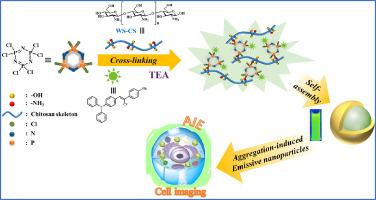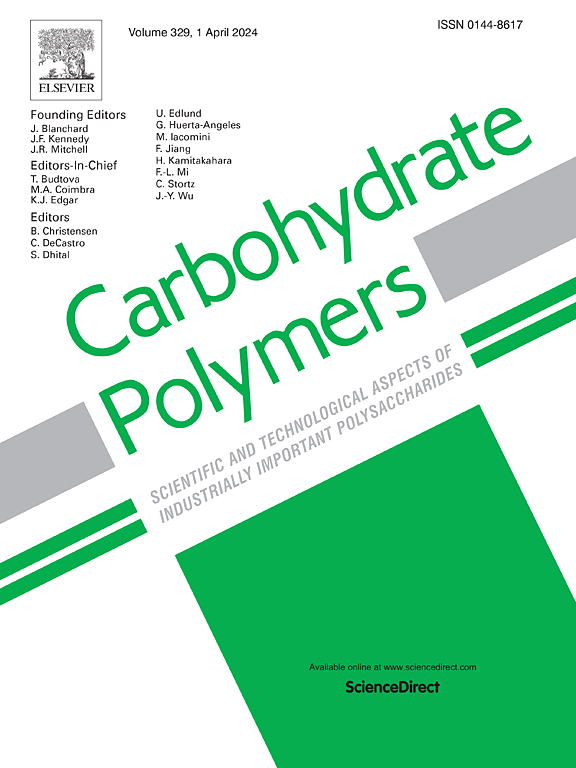Fabrication of chitosan based luminescent nanoprobe with aggregation-induced emission feature through ultrasonic treatment
Abstract
Chitosan is an abundant natural polysaccharide that contains a lot of amino and hydroxyl groups. It possesses great potential for biomedical applications owing to its low toxicity, biodegradability and low cost. Herein, a novel chitosan-based fluorescent copolymer (WS-CS-TPA) was designed and synthesized via nucleophilic substitution of hexachlorocyclotriphosphazene (HCCP), water-soluble chitosan (WS-CS) and an aggregation-induced emission (AIE) fluorogen (AIEgen) triphenylamine derivative (TPA-NH2). Under ultrasonic treatment, 1.16 g TPA-NH2 and 1.1 g WS-CS can be conjugated by 0.7 g HCCP at room temperature. The obtained copolymer shows amphiphilic property and could assemble into nanoparticles with size about 100 nm. After self-assembly, TPA-NH2 was aggregated in the core, thus exhibiting superb AIE feature with intense green fluorescence emission in aqueous media. On the other hand, hydrophilic WS-CS was coated on the surface of nanoparticles and endowed their high water dispersibility. Results from preliminary biological assays suggested that WS-CS-TPA can be internalized by cells and exhibits low cytotoxicity, suggesting their great potential for biological imaging and intracellular drug delivery.


 求助内容:
求助内容: 应助结果提醒方式:
应助结果提醒方式:


